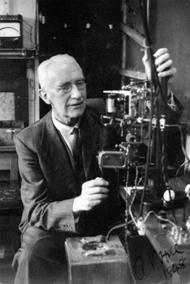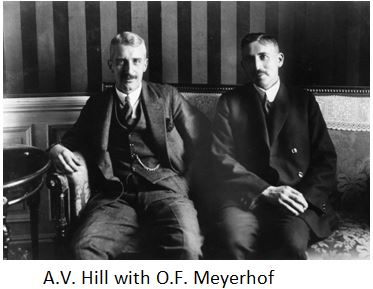 A.V. Hill came up to Trinity College Cambridge to study Mathematics and then after graduating, under the influence of J.N. Langley, studied Physiology. As a Trinity College Research Fellow from 1910, he focused on muscle and heat production, although his research with J.N. Langley on receptor theory was also groundbreaking. All students of drug-receptor binding in pharmacology and enzyme-substrate binding in biochemistry are familiar with the Hill Coefficient, which Hill originally applied to the co-operative binding of O2 molecules to haemoglobin.
A.V. Hill came up to Trinity College Cambridge to study Mathematics and then after graduating, under the influence of J.N. Langley, studied Physiology. As a Trinity College Research Fellow from 1910, he focused on muscle and heat production, although his research with J.N. Langley on receptor theory was also groundbreaking. All students of drug-receptor binding in pharmacology and enzyme-substrate binding in biochemistry are familiar with the Hill Coefficient, which Hill originally applied to the co-operative binding of O2 molecules to haemoglobin.
Hill became a Fellow of the Royal Society in 1918. In 1920 he moved to Manchester University and in 1923 he moved to University College London where he spent most of the rest of his career. During WW2, A.V. Hill was a member of the War Cabinet Scientific Advisory Committee.
A.V. Hill was awarded the Nobel Prize in Physiology or Medicine 1922 "for his discovery relating to the production of heat in the muscle" (with Otto Fritz Meyerhof "for his discovery of the fixed relationship between the consumption of oxygen and the metabolism of lactic acid in the muscle").
http://www.nobelprize.org/nobel_prizes/medicine/laureates/1922/hill-bio.html
http://www.nobelprize.org/nobel_prizes/medicine/laureates/1922/hill-lecture.html
At the Hill display, we will look at how energy production can be measured.
Photographs courtesy of Professor Nicholas Humphrey


